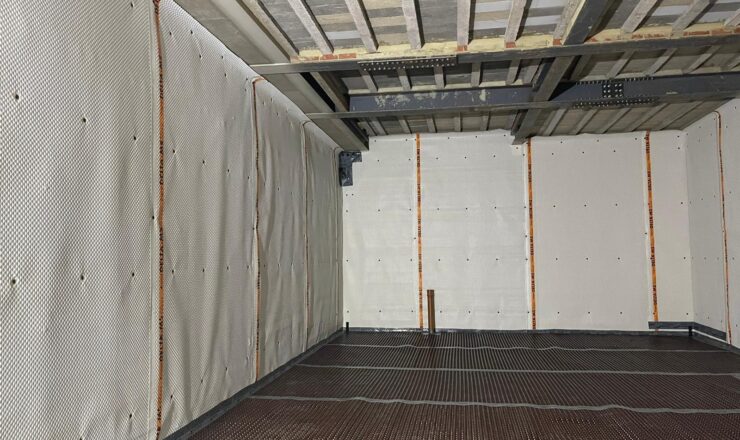Beneath the vibrant streets of London, basements provide valuable living space. Yet, the city’s rain, aging structures, and historical charm pose a challenge: water damage. Enter basement waterproofing—an essential shield against leaks and floods. In this exploration, we uncover why every Londoner should consider this protection for their underground spaces, ensuring homes stay dry and resilient in the face of urban complexities.
Basement waterproofing is the process of making a basement or below-ground structure resistant to water infiltration and preventing water damage.
Since basements are below ground level, they are particularly susceptible to water issues such as seepage, leaks, and flooding. Waterproofing measures are taken to protect the basement against these problems, ultimately preserving the structural integrity of the building and creating a dry, habitable space.
Delta membrane, commonly referred to as a damp-proofing or waterproofing membrane, is a type of material used in construction, particularly in basements, to control moisture and prevent water penetration. Basements are vulnerable to water infiltration due to their below-ground location, and using a delta membrane is one way to address this issue. According to Delta Membrane Systems Limited, a manufacturer and supplier of specialist structural waterproofing systems, there are a few common methods used in waterproofing:
- Type A (barrier system)- barrier membranes or waterproof coats such as bitumen which are applied directly to the building structure. The membrane can be applied inside or outside the building to prevent free water from entering the building.
- Type B (structurally integral)- Waterproofing refers to any integrated waterproofing system that results in the property/structure being waterproof by design. This usually means that the functionality of the Type B waterproofing system is established at the waterproofing design stage and integrated during construction.
- Type C (Cavity Drainage Waterproofing System) – maintainable waterproofing solution for new-build basements, refurbishment, and retrofit projects. The Type C System comprises of two key components, a Cavity Drainage Membrane, and a Basement Drainage system.
- Combination waterproofing- Combination systems can offer solutions to convoluted/difficult shapes to waterproof. A liquid/cementitious (Type A) system can be lapped behind a Type C system, to provide continuity of the waterproofing design.
- Damp proofing- securing external walls below ground level by preventing moisture from entering your home’s foundation or basement. It is common to use a mixture that typically contains either tar or asphalt and is applied to the foundation’s outside walls.
- Basement drainage- Delta drainage channels are specially designed to collect and transport the groundwater away to a Delta Sump Pump. The channels have holes in the top that allow water to enter.
- Flood Resilience- resistance and recoverability construction using methods and materials that reduce the impact of a flood – reducing risk and damage.
- Ground Gas Protection- technical solution to prevent or to control gas penetration into properties and structures. Gas protection systems are critical in projects constructed on land affected by permanent ground gas and/or volatile organic compound (VOC) contamination.
It’s important to note that the most effective waterproofing strategies for basements often involve a combination of these methods, tailored to the specific needs and conditions of the property. Regular maintenance and addressing issues promptly are key to ensuring the long-term effectiveness of basement waterproofing measures. If you are experiencing persistent water problems in your basement, it is advisable to consult with a professional waterproofing contractor to assess the situation and recommend appropriate solutions.
Key features and functions of delta membranes for basements include:
Waterproofing: Delta membranes are typically made from materials like high-density polyethylene (HDPE) or similar synthetic materials that are impermeable to water. This helps prevent water from seeping into the basement through the walls.
Damp-Proofing: In addition to waterproofing, delta membranes also provide damp-proofing by creating a barrier against moisture. This is important for preventing the gradual passage of water vapor through the walls, which can lead to dampness and mold growth.
Drainage: Some delta membranes are designed with built-in dimples or studs on one side. These dimples create an air gap between the membrane and the wall, allowing water to drain down to the basement floor. This drainage capability helps in managing water that may accumulate against the exterior of the foundation.
Protection: Delta membranes also serve to protect the structural integrity of the basement walls by preventing water damage. Water infiltration can weaken the foundation over time, leading to structural issues and compromising the integrity of the building.
Ease of Installation: Delta membranes are often relatively easy to install during construction or as part of a renovation project. They can be applied to the exterior of the basement walls or on the interior, depending on the specific requirements of the project.
Waterproofing a basement is necessary in London, as in many other places, due to various reasons related to the local climate, geology, and building practices. Given these factors, investing in effective basement waterproofing in London is a practical and proactive approach to protecting properties, ensuring the longevity of structures, and maintaining a healthy living environment. Professional waterproofing contractors in the area can assess the specific needs of a property and recommend appropriate solutions tailored to the local conditions. 

